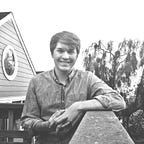Blind Spots
New products usually have just 1 or 2 flaws that need fixing the most. The product owner’s job is to identify those core flaws, and figure out how to fix them. If you can do that, then your chances of success go way up.
The problem is that core flaws are never straightforward. They exist off to the side, where you’re not looking.
So if you’re working on a product that’s not quite clicking with users, try to widen your focus. It’s easy to think of ways to do more of the same, but it’s really hard to think differently.
One good tactic to help with this is talking to older and wiser advisors and ask them “What should I be thinking about that’s not even on my radar right now?”. Every time I ask that question I get a great answer. Something about the phrasing makes people really think and come up with something good.
Another tactic that helps is to let yourself think forbidden thoughts. What I mean by “forbidden” is a thought that, if true, would have serious negative implications. For example, some basic thesis may be untrue that you’ve built a lot of product on top of. To start over would cost you a lot of time and make you feel like you’re starting all over again. But if you compare it to the cost of failure, it’s worth it to throw away bad ideas, even if it’s expensive to do so.
That’s why it’s so hard to make a great product. It’s not usually a matter of tiny optimizations (i.e. more of the same), but rather about doing something new, something different. To do this, you need to see through your blind spots.
